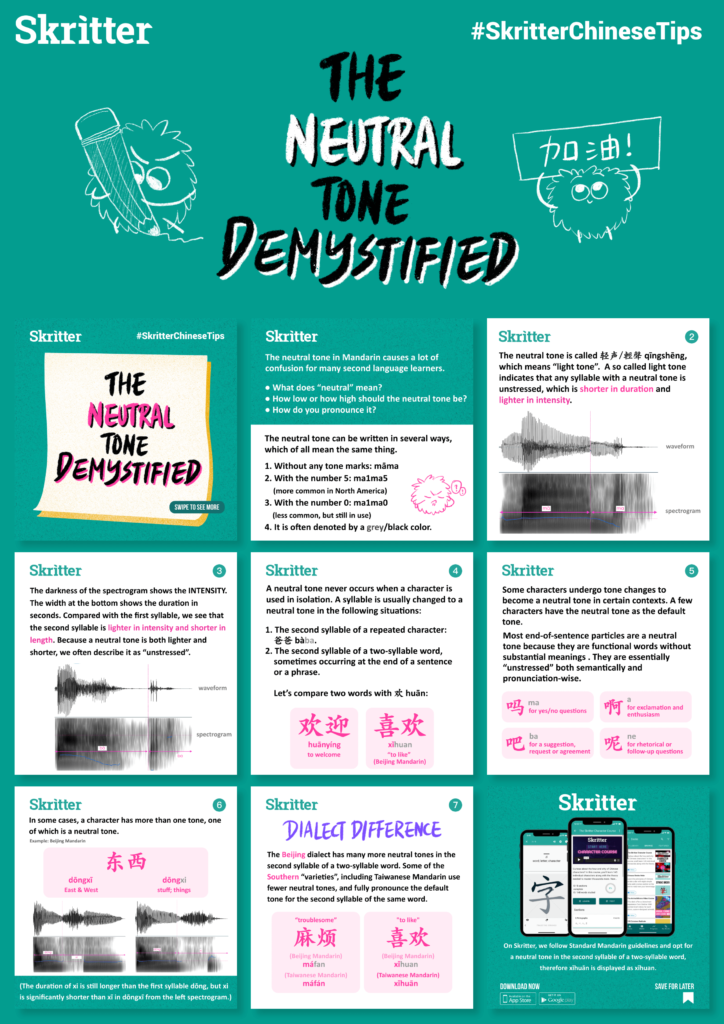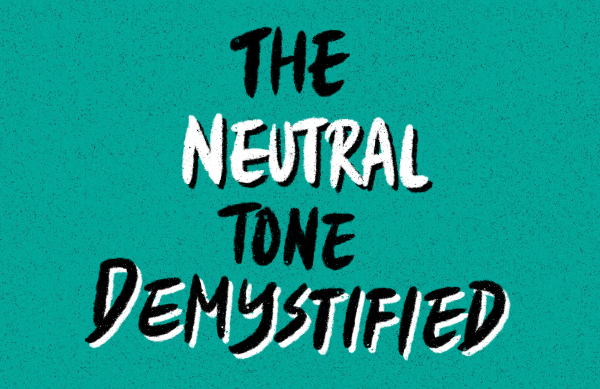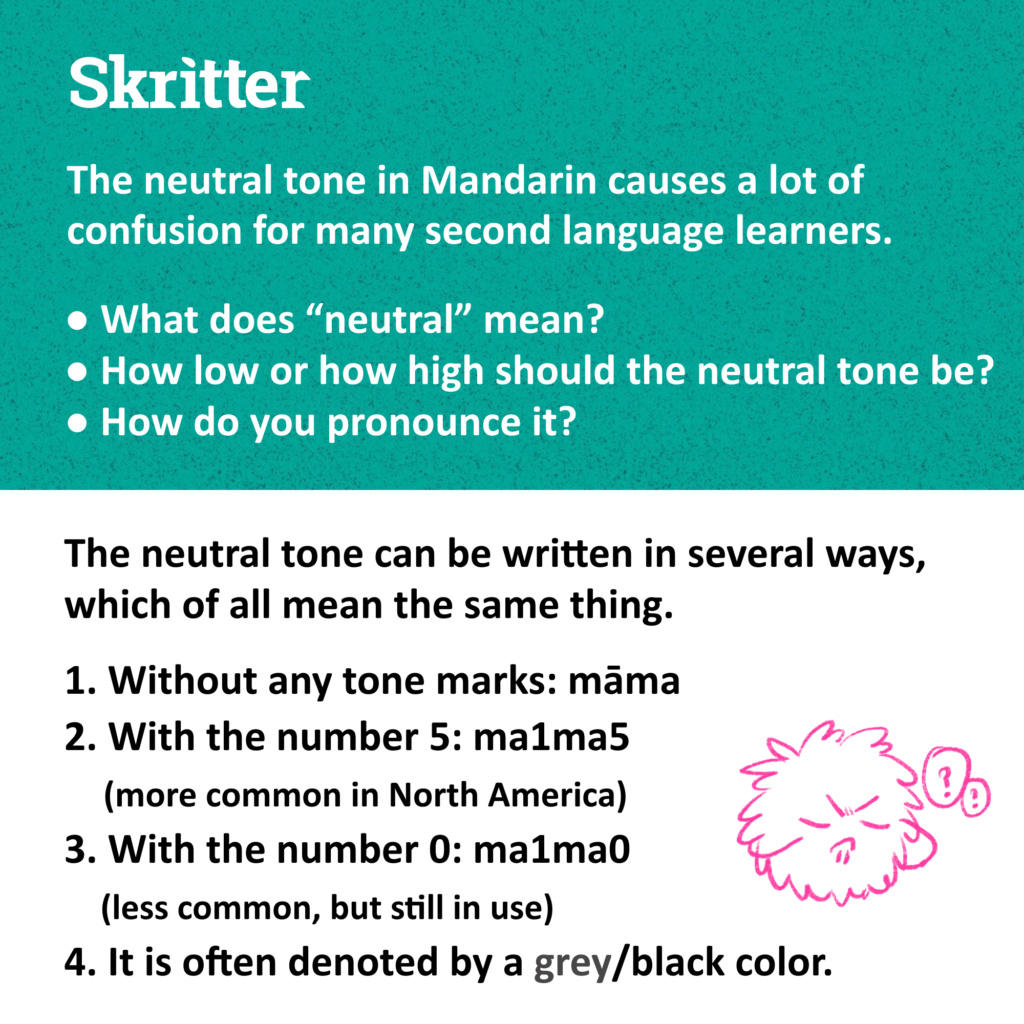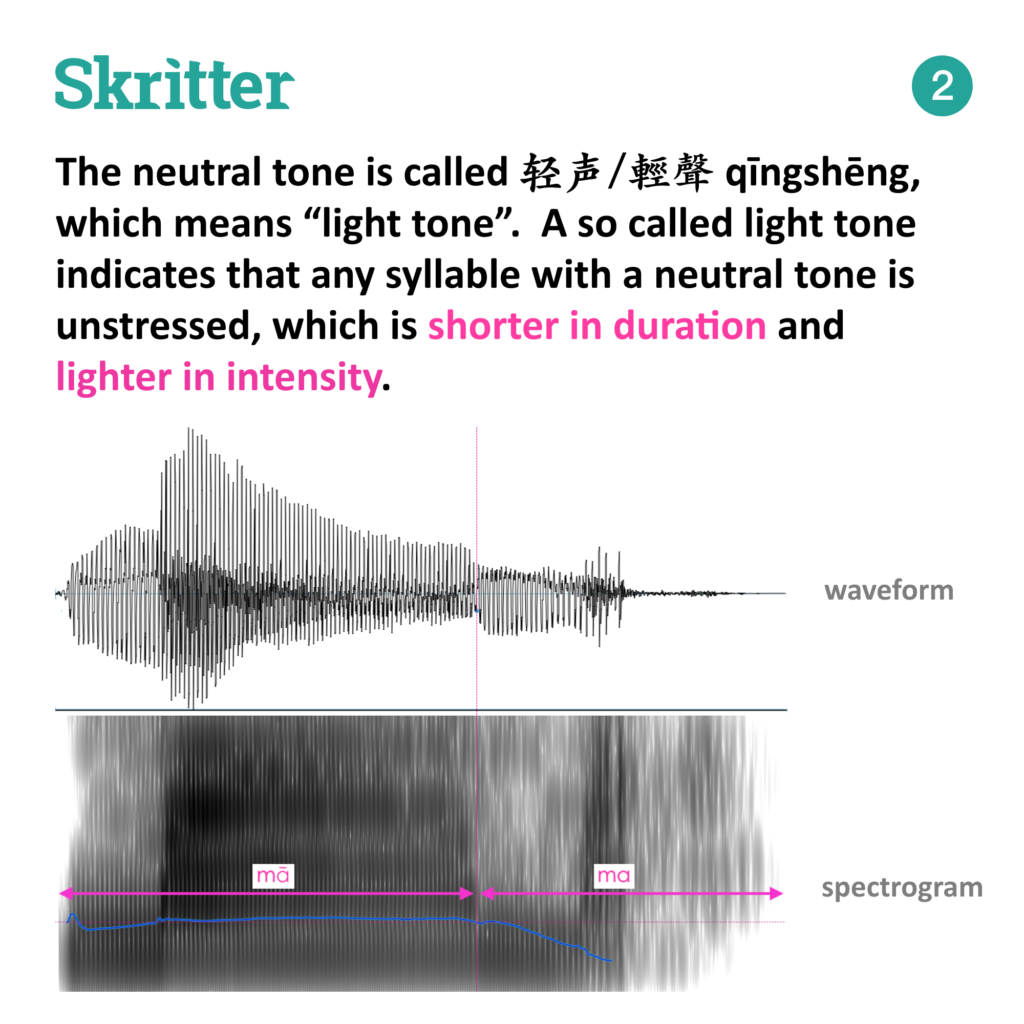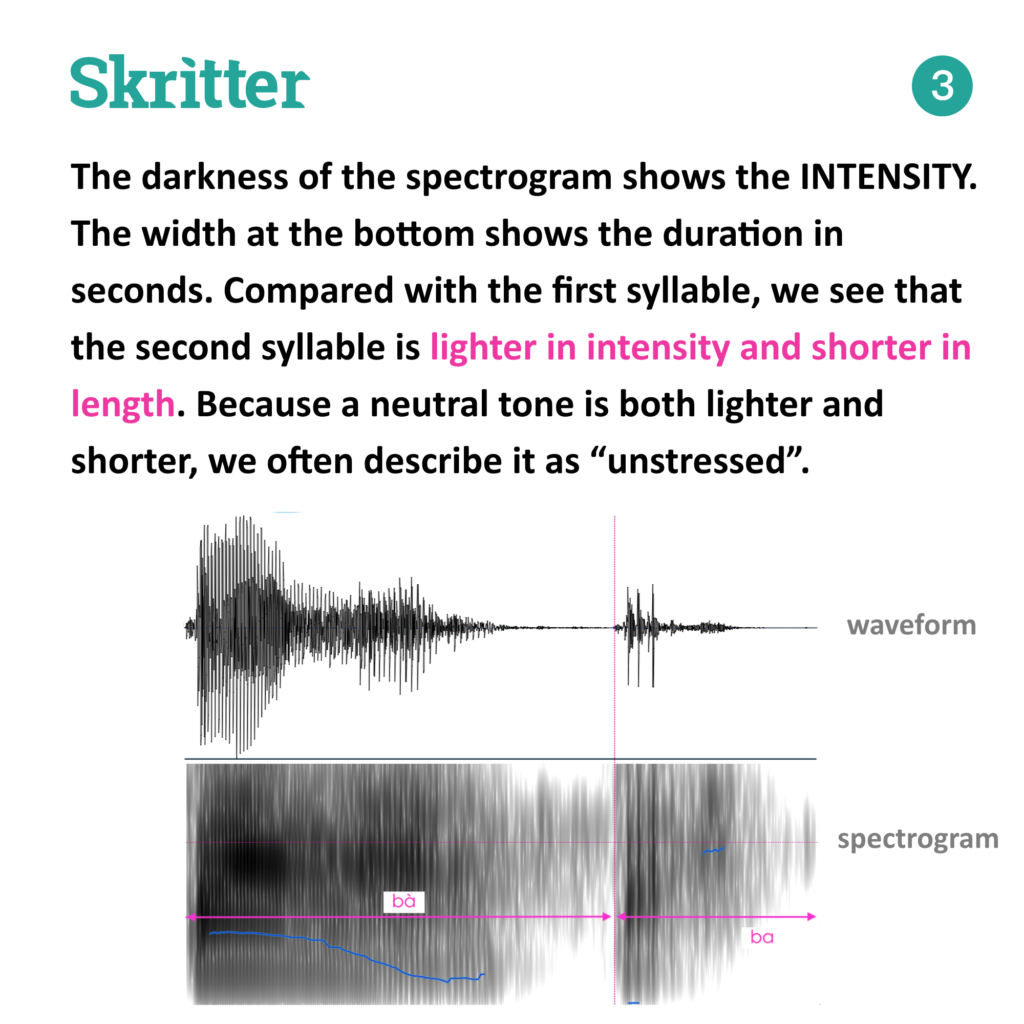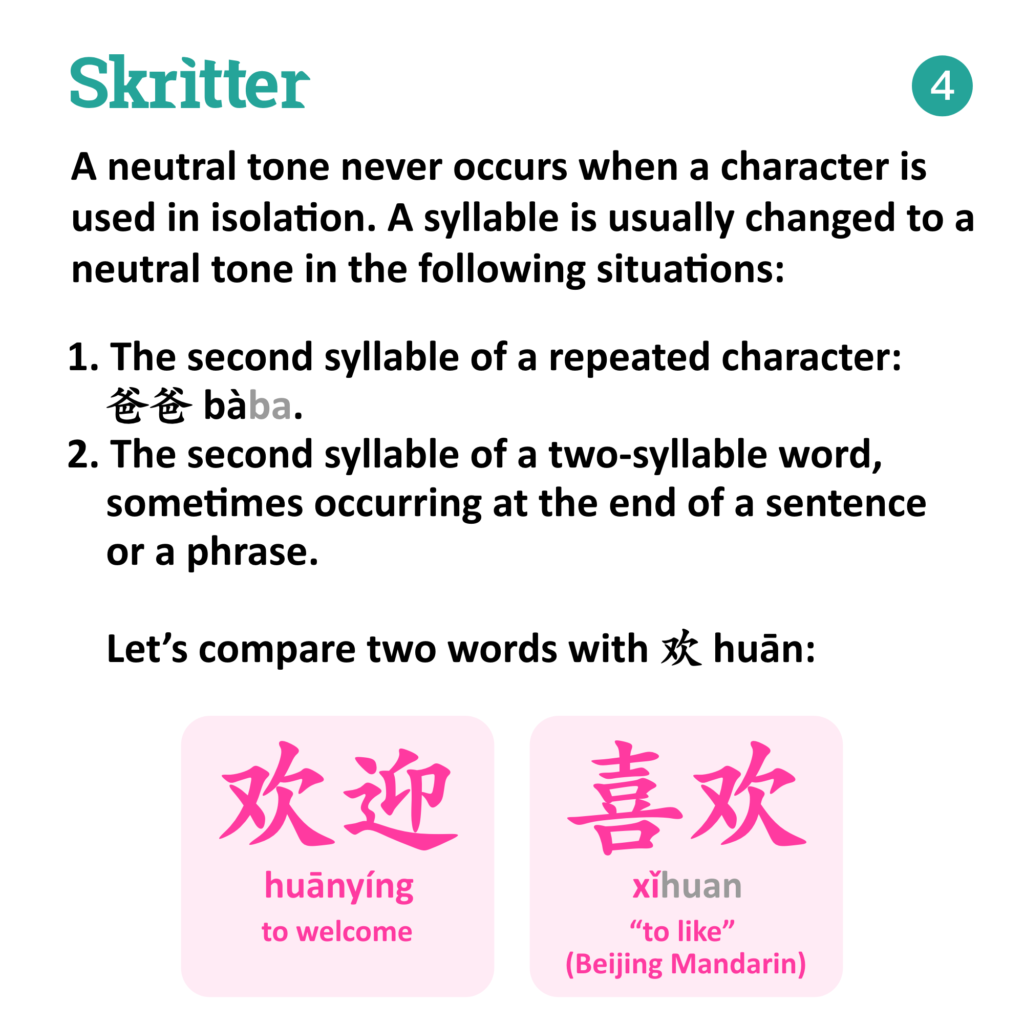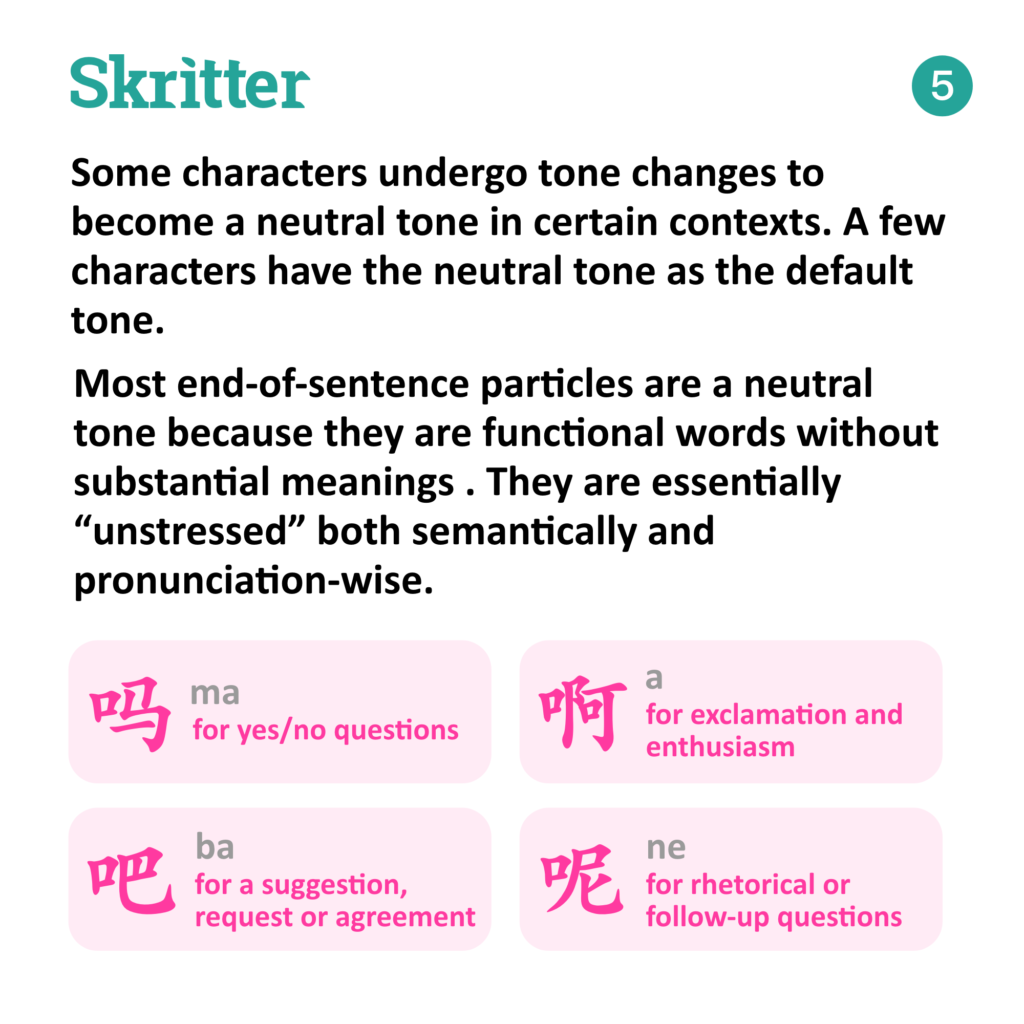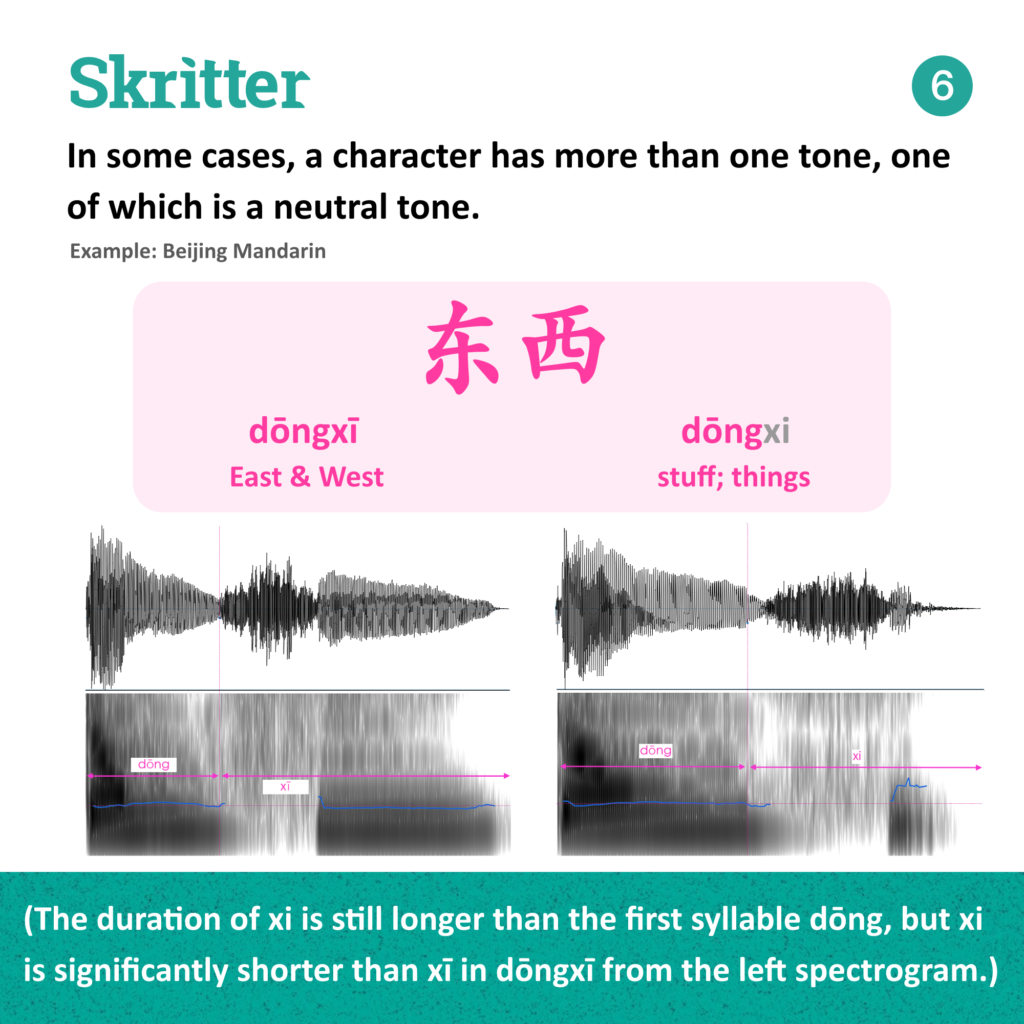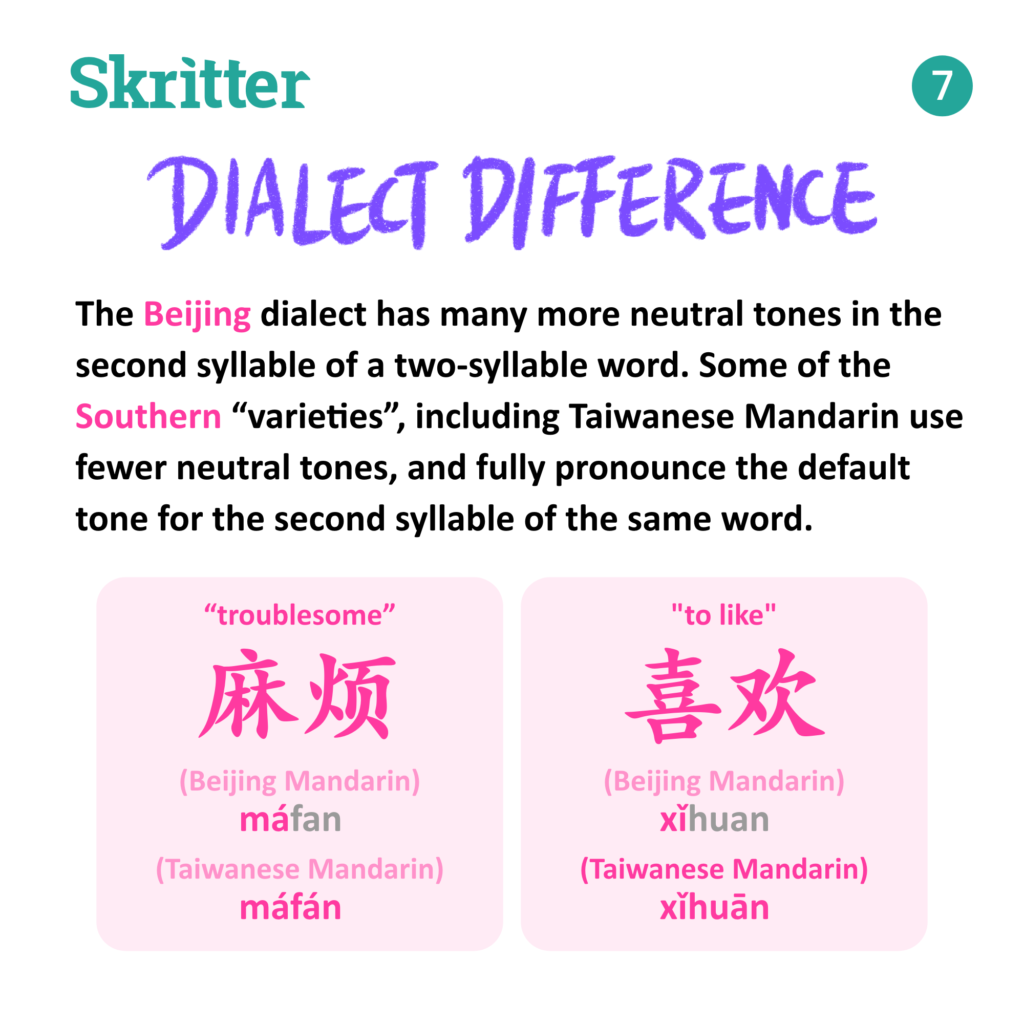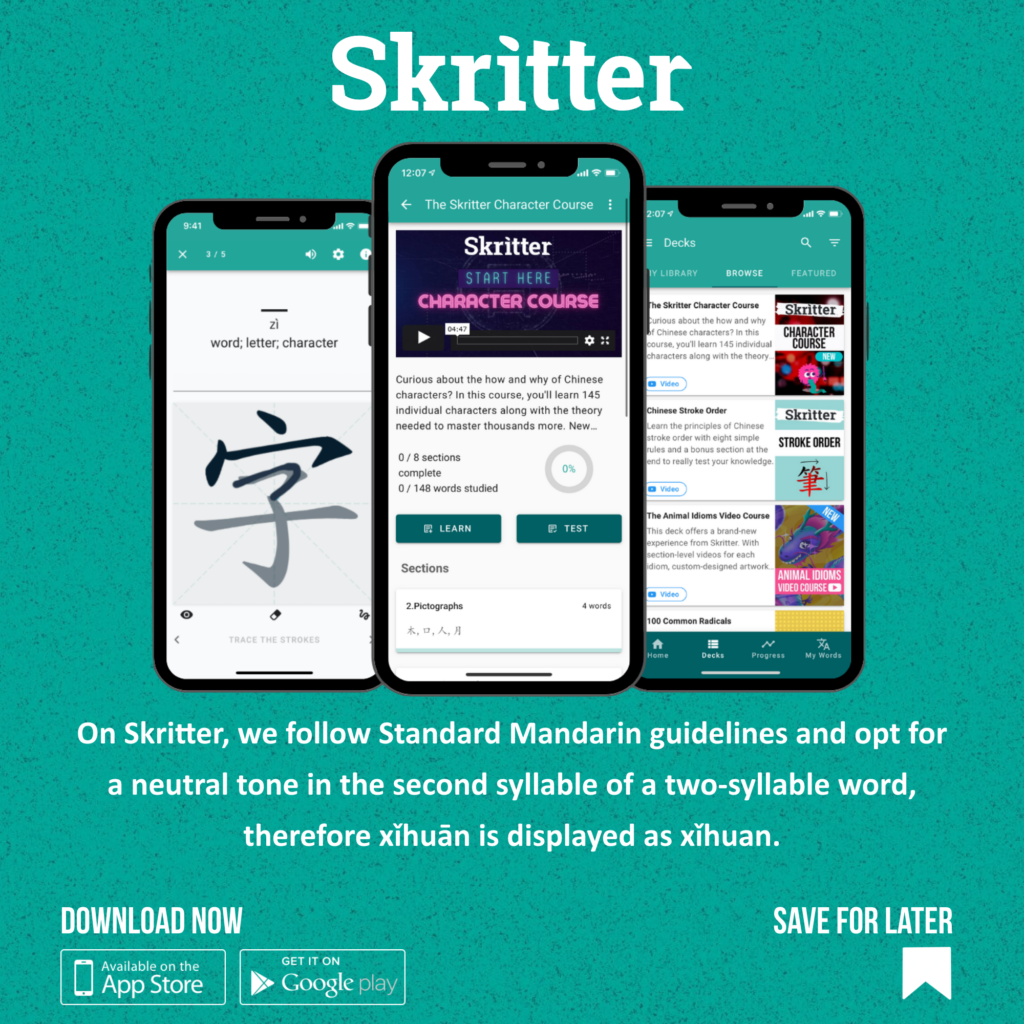The neutral tone in Mandarin causes a lot of confusion for many second-language learners.
- What does “neutral” mean?
- How low or how high should the neutral tone be?
- How do you pronounce it?
The neutral tone can be written in several ways, which of all mean the same thing.
- Without any tone marks: māma
- With the number 5: ma1ma5, (more common in North America)
- With the number 0: ma1ma0, (less common, but still in use)
- It is often denoted by a grey/black color.
The neutral tone is called 轻声/輕聲 qīngshēng, which means “light tone”. A so-called light tone indicates that any syllable with a neutral tone is unstressed, which is shorter in duration and lighter in intensity.
The darkness of the spectrogram shows the intensity. The width at the bottom shows the duration in seconds. Compared with the first syllable, we see that the second syllable is lighter in intensity and shorter in length. Because a neutral tone is both lighter and shorter, we often describe it as “unstressed”.
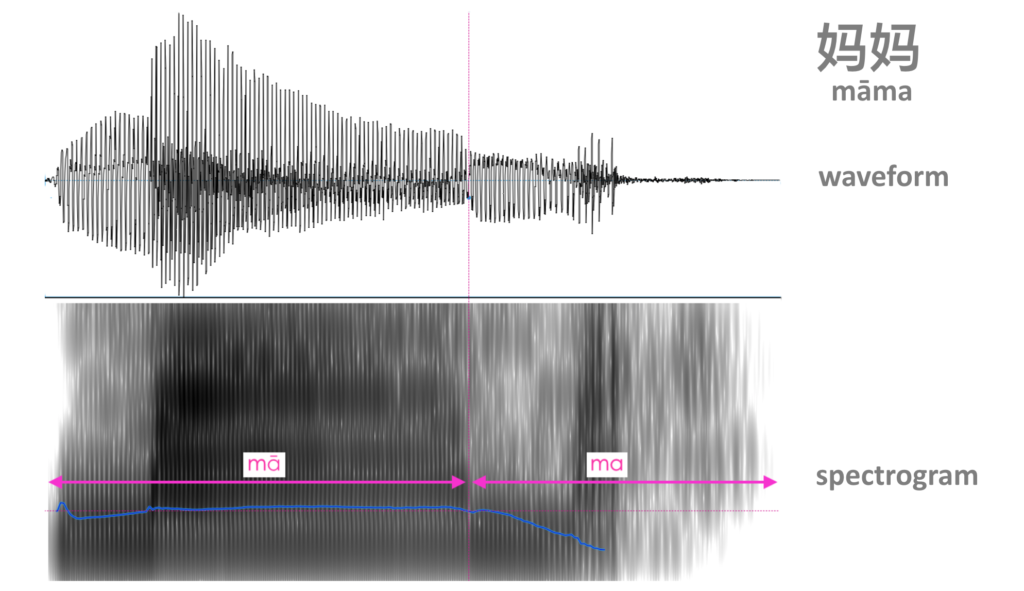
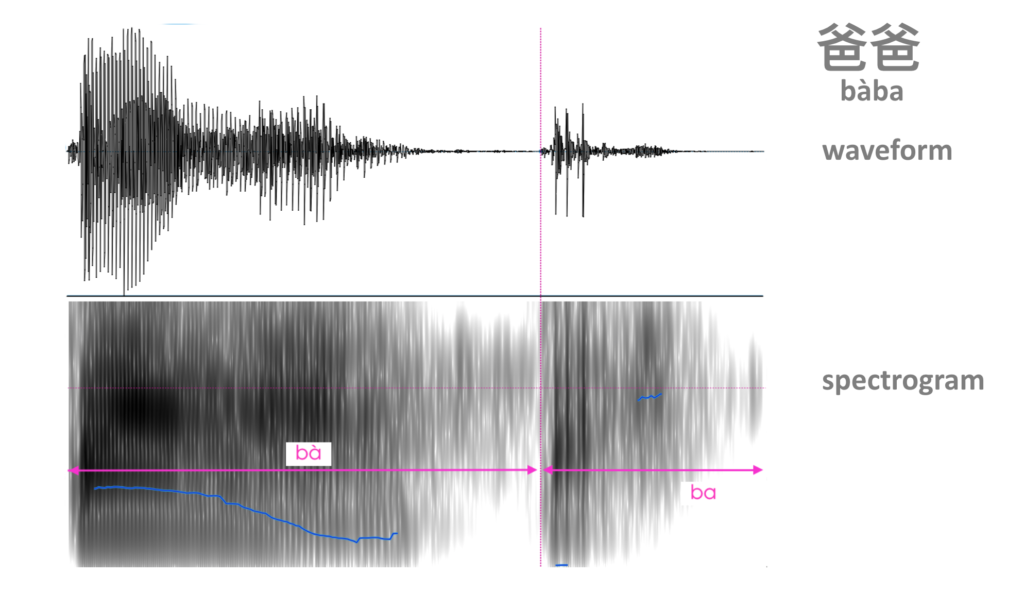
A neutral tone never occurs when a character is used in isolation. A syllable is usually changed to a neutral tone in the following situations:
- The second syllable of a repeated character: 爸爸 bàba.
- The second syllable of a two-syllable word, sometimes occurring at the end of a sentence, or a phrase.
Let’s compare two words with 欢 huān:
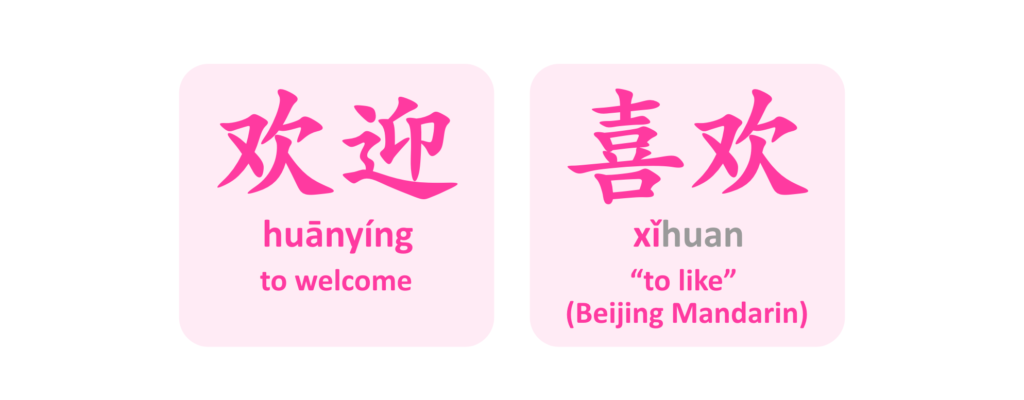
Some characters undergo tone changes to become a neutral tone in certain contexts. A few characters have the neutral tone as the default tone.
Most end-of-sentence particles are a neutral tone because they are functional words without substantial meanings . They are essentially “unstressed” both semantically and pronunciation-wise.
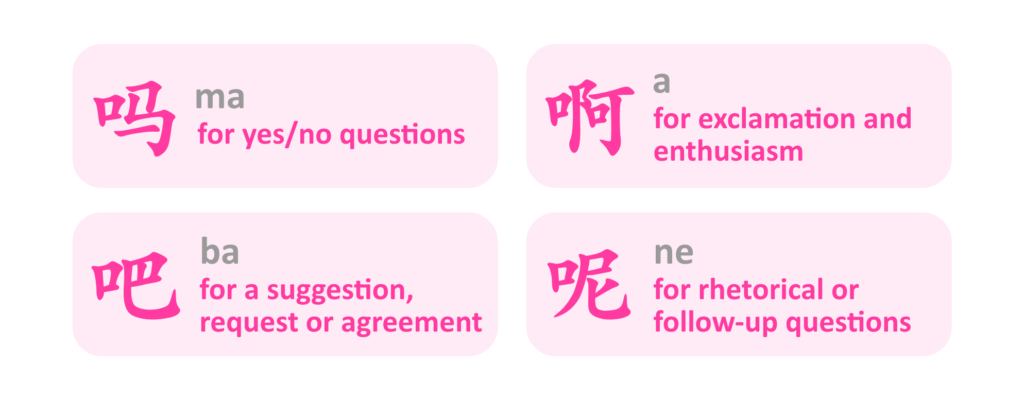
In some cases, a character has more than one tone, one of which is a neutral tone.
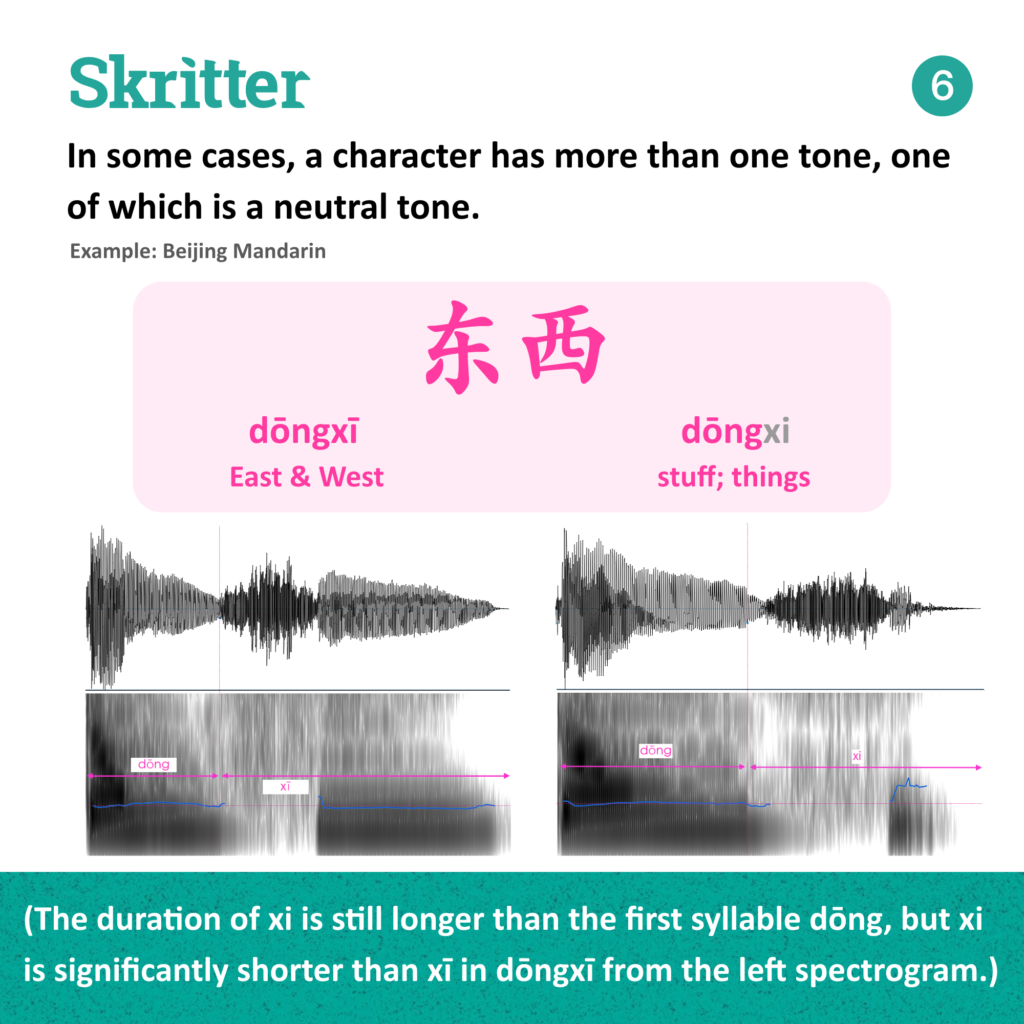
Dialect Difference
The Beijing dialect has many more neutral tones in the second syllable of a two-syllable word. Some of the Southern “varieties”, including Taiwanese Mandarin use fewer neutral tones, and fully pronounce the default tone for the second syllable of the same word.
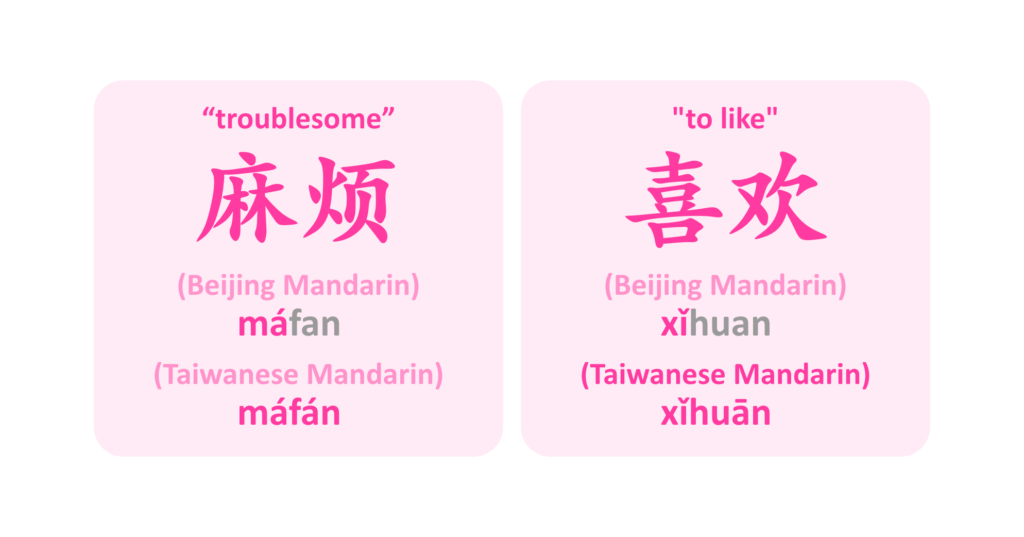
Ok, that’s it for this lessson. Check out some of our other posts on tones here:
- Tone Sandhi: Tone Changes for the Character “一”
- Tone Sandhi: Tone Changes for the Character “不”
- Tone Sandhi: The Third Tone
Download the A4 Infographic
